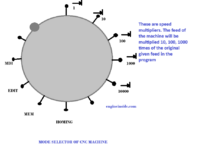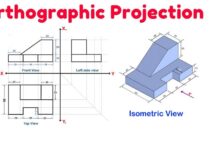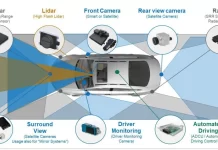UNIX – OPERATING SYSTEM
The UNIX operating system was pioneered by Ken Thompson and Dennis Ritchie at Bell Laboratories in the late 1960’s. UNIX is a trademark of AT & T Bell Laboratories.
UNIX is time-sharing, multi-tasking and open operating system. It is a modular integrated set of software that resides on and co-ordinates computer system resources. The UNIX system serves as the interactive interface between the user and the computer system. UNIX is turning out to be a world standard universal operating system. Today, UNIX
runs on all types of computers from Cray and Fujitsu Supercomputers to IBM PCs, Apple’s
Macintoshes and even on lap tops.
ARCHITECTURE OF UNIX SYSTEM
UNIX is having four main architectural layers:
i. Hardware (Firmware)
ii. Kernel (Scheduler)
iii. Shell, Utilities, Software tools
iv. Application programs
UNIX operating system consists of:
• A central operating system program (KERNEL).
• An assortment of utilities like init, gett, login, stty, mkfs, mknod, clri, sync, mount,
unmount, nice, ps, make etc.
• And a file structure; ordinary file, directory files, fifo files and special files. This
file structure architecture provides a convenient and useful method for partitioning
utilities.
FUNCTIONS OF UNIX KERNEL
The Unix Kernel is the core of the UNIX system. Every process interacts with the kernel in some way, either directly or by making a system call, or indirectly by being allowed to
run. It is a single program whose jobs are to allocate the CPU among computing processes,services request from those processes and accesses files. Kernel is a single program written in a general purpose programming language like C. It includes Operating Systems and Environments
• Interrupt and error handling
• System accounting
• Memory management
• Process scheduling and management
• Input/Output services
• File management and security
• Date and time services
FUNCTIONS OF THE SHELL
In AT & T’s version the Bourne shell prompt is ‘$’ and Berkeley’s BSD shell prompt is ‘%’.
The shell is an interpreter program which acts for:
• Program execution
• Interactive programming language
• Pipe-line hookup
• Input/Output redirection
• Filename substitution
REASONS FOR THE POPULARITY OF UNIX
The popularity of UNIX can be attributed to many of its very distinctive features. Some of
them are listed below.
• A general purpose system for performing a wide variety of jobs or applications.
• An interactive environment that allows you to communicate directly with the computer and receive immediate responses to your requests and
messages.
• A multi-user environment that allows you to share the computer’s resources with other users without sacrificing productivity.
• The system’s main asset is its portability, the relative ease with which it
can be implemented on different hardware, software systems and
architectures.
• UNIX has achieved the status of a de-facto standard in the computer industries.
• Net-working in enterprise wide client-server computing.
• UNIX has found a home on workstations. It matches up naturally with Reduced Instruction Set Computing (RISC) workstations.
• Distributed processing capability, satellite, and fully transparent distributed
system.
• POSIX – Portable Operating System Interface,
• Shell programming
• Sophisticated security for user, group, others and file, record locking with
encode decode facility.
• UNIX supports almost all programming languages.
• UNIX offers many “vertical” applications such as financial modeling,
robotics and medical billing.
Because of the availability and wide acceptability of UNIX, hundreds of software tools
and utilities have been developed with the help of which a programmer can save his time
and can utilize it for better software development for the effective use of computer.
UNIX serves all levels of users: UNIX serves all levels of users:
Office automation – Text processing, text formatting.
Terminal operator – Online transaction processing (OLTP).
Programmer – Plenty of utilities are available to reduce
miscellaneous programming.
Engineers – Work stations (CAD, CAM, CASE, and Robotics).
Managers – Shell programming for query purpose, mail
processing for decision making.
Multi-unit industry – By using extensive networking communication
facilities.















































